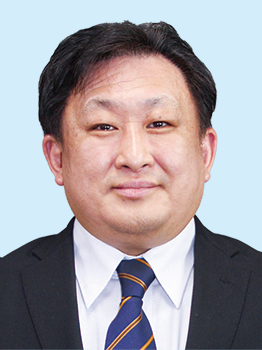マグマ発電/慶応義塾大学 武藤佳恭教授/世界を代表する総合科学誌「サイエンス」に掲載
本日、武藤佳恭 慶応義塾大学教授より、「マグマ発電の短い論文が、ScienceのeLettersに掲載されました」とのお知らせを頂きました。昨年10月「自動車のCAN-busに関するセキュリティ問題」に続いての掲載となりました。
http://science.sciencemag.org/content/355/6329/1001/tab-e-letters
サイエンス(Science)は、1880年に創刊され、現在アメリカ科学振興協会 (AAAS)によって発行されている学術雑誌です。ネイチャーと並んで、世界で特に権威がある学術雑誌です。掲載基準は厳しく、投稿は査読を経る必要があり、投稿された論文のうち、掲載に至るのは、10%以下と言われています。サイエンス誌の権威は高く、学術界において特に引用される雑誌の一つとなっています。
/慶応義塾大学 武藤佳恭教授研究室の全面的ご協力を頂き、2012年12月18日 神奈川県議会本会議一般質問において、「県経済活性化に資する新技術への支援」として、「温度差発電システム」「横波スピーカー」の実物を持ち込み、私自ら実演し、黒岩知事に提案を致しました。本会議中の発電や新技術スピーカーの実演は県政史上初となります。
温度差発電は、半導体の素子を利用して発電をするものです。私の質問時は、水とお湯の温度差を用いて、発電をさせて頂きました。温度差発電は、様々な排熱を利用します。その様な無駄に捨てられるエネルギーを収穫して電気に変換する技術をエネルギーハーベスト技術と言います。
武藤教授は、この温度差発電の原理を使い、マグマや火山口の熱と大気温の差を利用する「マグマ発電」を提案しています。環太平洋火山帯の中でも最も火山活動が活発な日本列島には,約90 の火山と約28,000 の温泉源が分布しています。九州にある桜島の火山口だけでも,625 億kWh のエネルギーをつくり出せる計算になり,これは全5000万世帯の約4.5 か月分の電気量に相当します。
私自身も慶応義塾大学SFC研究所上席所員として、武藤佳恭 慶応義塾大学教授 御指導のもと、自治体政策研究(コミュニティ活性化・ラボ Smart community innovation laboratory)にあたっています。県議会議員としても、この捨てられるエネルギーを収穫して電気に変換するエネルギーハーベスト技術を神奈川県のエネルギー政策に盛り込むことができるよう取り組んで参ります。
~~~~~
【写真】: タウンニュース厚木版2013年1月1日号。2012年12月18日 神奈川県議会本会議一般質問について取り上げました。慶応義塾大学武藤佳恭教授研究室の全面的ご協力を頂き、「温度差発電」「横波スピーカー」の実物を持ち込み、私自ら実演。本会議中の発電や新技術スピーカーの実演は県政史上初。
カテゴリー:政策研究・勉強会, 活動日誌, 佐藤知一コラム
2017年03月14日 20:18

As the current renewable energy is unstable1, Magma energy should be utilized for generating a huge amount of electric power instead of consuming natural gas, coal, petroleum, nuclear, and other fuels2. Magma with the lifetime of 0.1 to 1 million years has never been used for generating electric power in the world. If we were to succeed the magma power plant, the existing fuel-consuming power plants can be replaced with it. The conventional geothermal power generators use the steam from the earth for generating electric power. In the magma power system, high temperature heats from magma around 1000 ℃ can be used to generate strong steam for driving the steam turbine in the power plant.
We have been seeking for natural high-heat sources. We have discovered that Japan has unlimited heat energy sources: magma heat energy. Although geothermal power generation has been studied for many years, in the conventional geothermal power generation, steam or vapor from earth is used to drive the steam turbine for generating electric power. Why not, directly use the magma heat of 1000 ℃ temperature using the heat pipe in order to transfer the high temperature heat to the steam turbine. It is now possible to design and develop the magma power plant where the high temperature heat pipe up to 2000℃ exists in the current market. No one has challenged the high temperature heat pipe to transfer heat energy from magma to the power plant.
Let’s take a look at the magma energy. Magma average density is 2.5 g/cm3. Assume that magma’s temperature is around 1000℃, then 1kg magma has 1 million Joule. We have a new volcano mountain called “Shinmoedake” located at Kyushu Island. The volcano mountain has a magma chamber or reservoir about 20 million m3. The energy of the magma chamber is given by:
(20×106)x(2.5×103) x106/(3600×1000)=139×108 kWh
According to Japanese government, 70×108 kWh is generated by a nuclear power plant. The magma chamber of Shinmoedake has twice the amount of energy, which is equivalent to the power generated from two nuclear power plants. Magma can continuously feed heat energy to us for million years. We don’t have to buy and use any fuel to burn for heat while the existing power plants use fuels. In Japan, we don’t have to import any fuel for power plants. Depending on the capacity of high temperature heat pipes, generated power can be determined by the transferred heat energy.
Although volcano eruptions are dangerous, it is indispensable for us to build magma power plants. Not like nuclear power plants, any explosion from the magma power plants does not spread any dangerous radiations. Cost of a magma power plant may be equivalent to that of the conventional thermal power plant. Because the conventional steam turbine can be used in the magma power plant.
References
1. April Reese, Blackouts cast Australia’s green energy in dim light, Science 10 Mar 2017:Vol. 355, Issue 6329, pp. 1001-1002
2. Yoshiyasu Takefuji, Nature Cafe at UK embassy in Tokyo, May 24, 2012
~~~~~